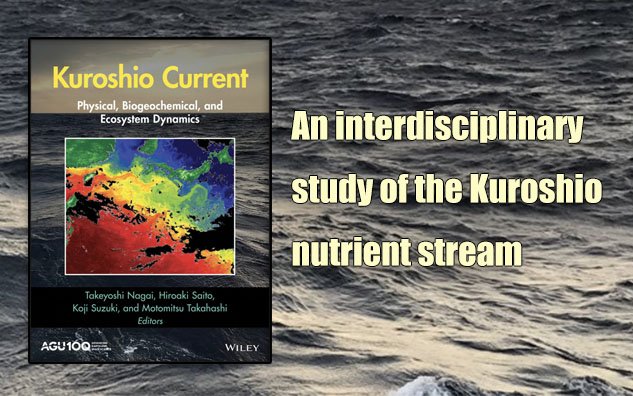
Kuroshio Current: Physical, Biogeochemical, and Ecosystem Dynamics - New book of findings by the IMBeR endorsed project – SKED
The North Pacific western boundary Kuroshio current, transports large amounts of heat, chemicals, and organisms, but is known to be nutrient-poor. Despite the low-nutrient concentration of Kuroshio water, the Kuroshio is an important spawning and nursery ground for various fish species, and a productive fishing ground. To understand the mechanisms of how this high fisheries productivity results from the oligotrophic conditions, i.e., the Kuroshio Paradox, and to determine how to use the ecosystem services sustainably, the Study of Kuroshio Ecosystem Dynamics for Sustainable Fisheries (SKED) started in October 2011. This ten-year project was funded by the Ministry of Education, Culture, Sports, Science and Technology, Japan (MEXT). This recently published book is based largely on the results from the SKED project. Physical, chemical, and biological aspects of the Kuroshio are described and compared to those of the Gulf Stream, the western boundary current of the North Atlantic Ocean, to understand the similarity and differences between them.
Volume highlights include:
- New insights into the role of the Kuroshio as a nutrient stream
- The first interdisciplinary examination of the Kuroshio Paradox
- Reflections on the influence of the Kuroshio on Japanese culture
- Research results on both the lower and higher trophic levels in the Kuroshio ecosystem
- Comparisons of nutrient dynamics in the Kuroshio and Gulf Stream
- Predictions of ecosystem responses to future climate variability
Kuroshio Current: Physical, Biogeochemical, and Ecosystem Dynamics, Geophysical Monograph 243, First Edition.
Edited by Takeyoshi Nagai, Hiroaki Saito, Koji Suzuki, and Motomitsu Takahashi.
©2019 American Geophysical Union. Published 2019 by John Wiley & Sons, Inc.
Preview the book that is available in print from Wiley.com or Amazon.com
